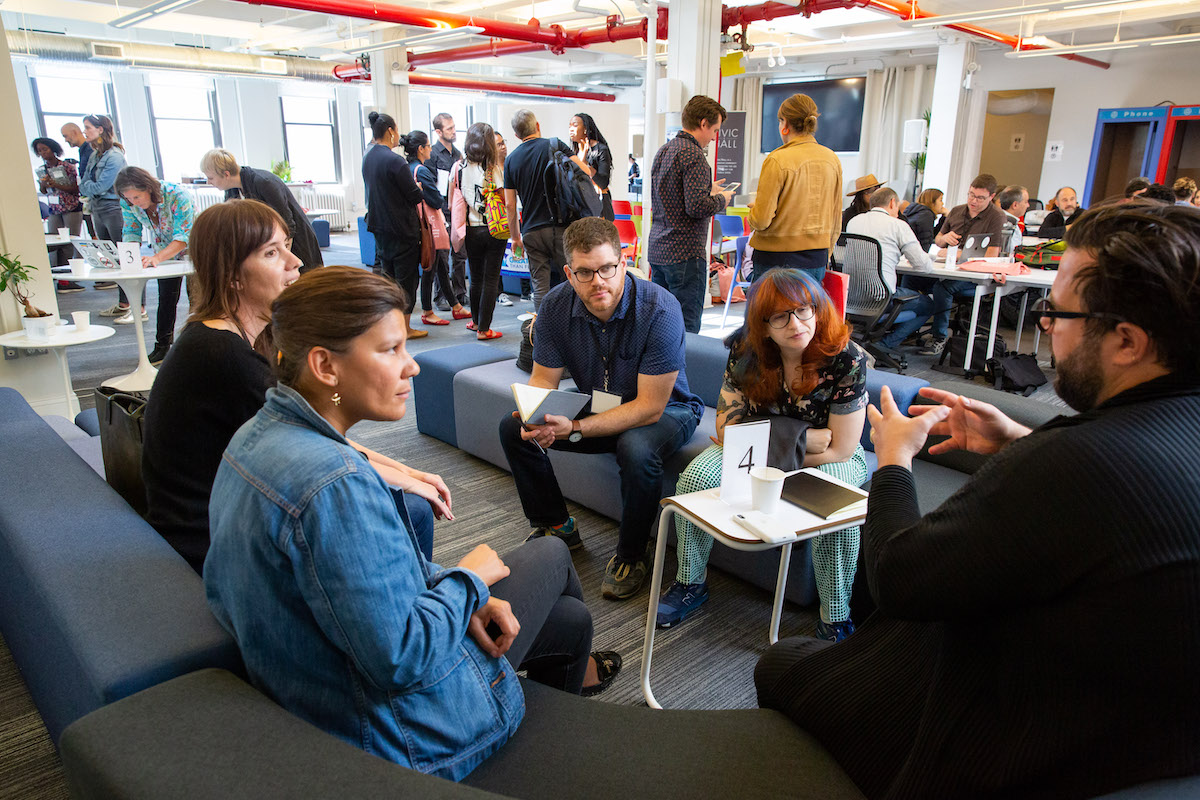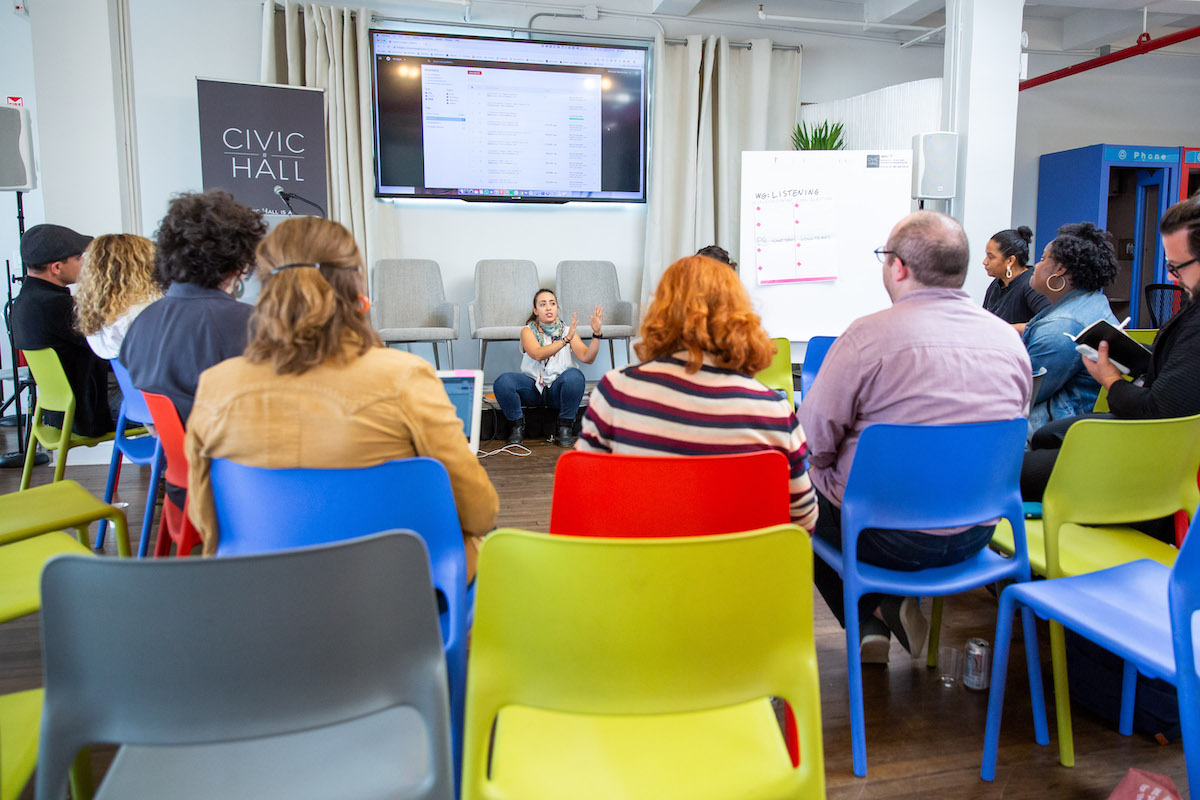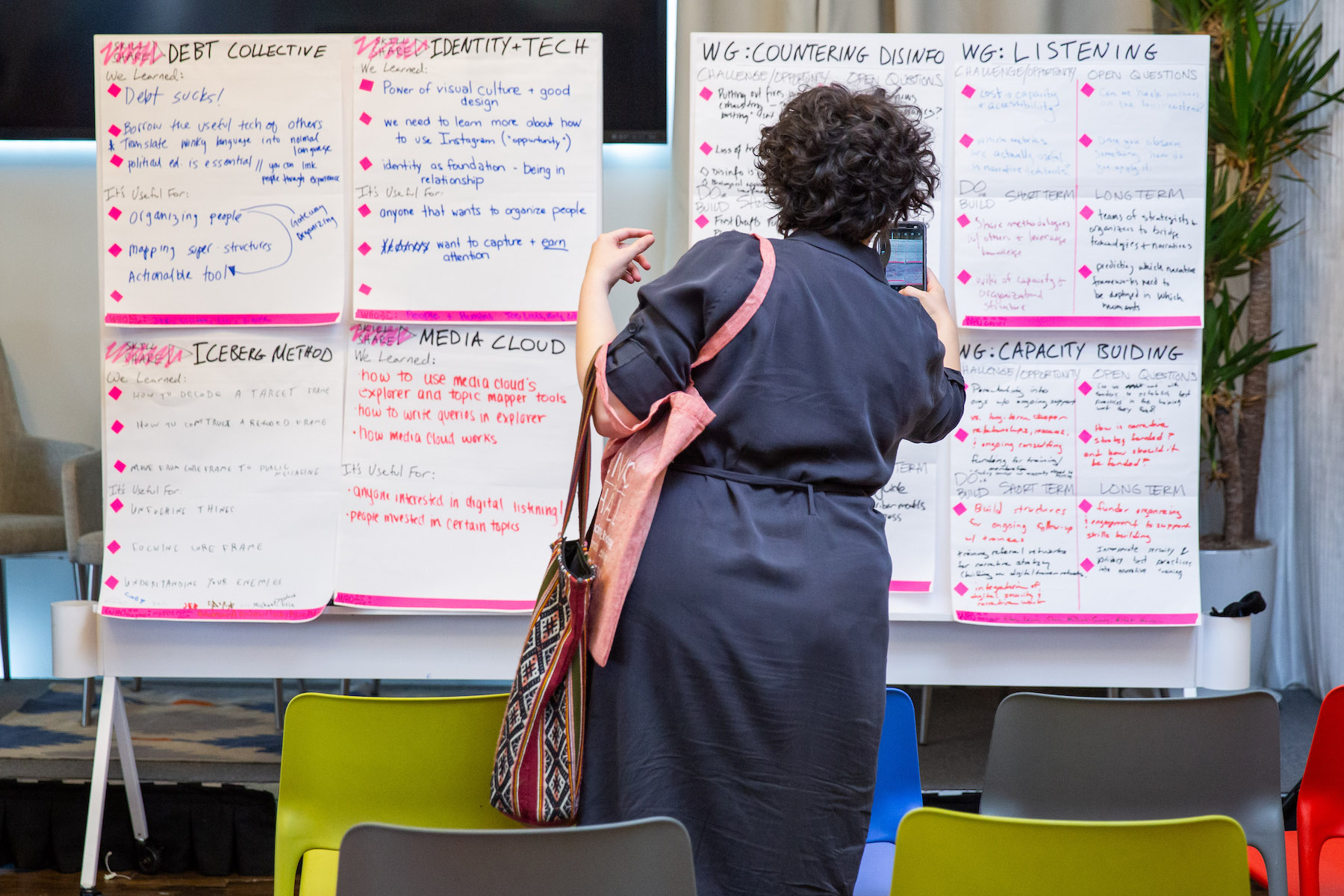Decoding Narrative Technology
– Melvin Kranzberg
I was born in Washington DC in the early 1980s. I have seen computers introduced into classrooms and witnessed the tragic sale of my family’s rotary phone. The cringe-inducing sound of dial-up progressed to an email account, looking for WiFi, ignoring Myspace, and logging onto Facebook. My peers have cursed the launch of Fox News and witnessed the birth of Twitter, Instagram, Haystack (RIP), Snapchat, TikTok, and bots. We’ve seen ad-based scraping evolve into the wholesale handover of data to governments and political campaigns. Political and advertising technologies are advancing at a pace our policy and communications networks aren’t prepared to keep up with. It’s exhausting! And that pace is unlikely to decrease in the near term.
Technology gives some narratives legs while stopping others before they start. As Narrative Initiative’s Jee Kim said at a recent gathering, the way we make sense of the world is changing:
Technology is a central component of narrative change in the 21st century. It accelerates the pace of dissemination of narratives; the rate of adaptation and mutation of narratives; and the range of their transmission.
Technology is helping advance broad misinformation campaigns and cohere disparate groups of nationalists and authoritarians. But, as we look at remarkable events of the past 10 years – Occupy Wall Street, Black Lives Matter, the Puerto Rican Summer, Hong Kong’s 2014 Umbrella Movement and 2019 protests – it is also fueling the disruption of existing power structures, cohering irresistible narratives and reconstituting the way we see ourselves and others.
Over the past three years, conversations with practitioners in organizing, culture, and the public sector have surfaced big questions about narrative and technology’s relationship to social change. For example:
- What is the actual universe of tools, technologies, and applied tactics that are out there?
- How do those committed to advancing equity and justice deploy and interact with these tools?
- How do we make sense of the ways in which actors manipulate public conversations to maintain or challenge dominant narratives?
In our search for answers, we developed a partnership with our friends at Civic Hall to explore the intersection between narrative and technology. We also read a ton. And read some more. And then we came up with a loose, working definition of “narrative technology.”
Narrative Technology encompasses the tools, platforms, and infrastructure that can be used to assist and accelerate the shifting and/or maintenance of dominant narratives. These include, but aren’t limited to, technologies that can baseline, listen to, test, and respond to media and online discourse at scale.
– a draft definition of “Narrative Technology”
We tested that definition with close partners. (Spoiler alert: It needs some adjustment! Coming soon.) And then we talked to a lot of people—with a focus on technologists and organizers—about the technologies they use and what’s needed. We also brought 50 people together for Start Making Sense: A working convening on Technologies for Narrative Change. Hosted in partnership with Civic Hall, Start Making Sense provided an opportunity for technologists and practitioners to sort through the challenges, opportunities, and possibilities of narrative tech.

Technologists and campaigners demonstrated narrative tech tools and strategies at a narrative tech science fair during the “Start Making Sense” convening in September, 2019.
Of course, we know challenges abound. Our conversations have raised complex questions about how tools like Facebook, Twitter, and Google control the narrative ecosystem. People have repeatedly highlighted that these private platforms are the main channels through which we find and share information.
Participants also raised concerns about infrastructure and resources. Social justice organizations operate on small budgets and don’t have access to the more expensive tools and technologies held by corporations and state actors. We also have a more diverse, but sometimes less connected, infrastructure than conservatives, who command a multi-tiered media echo chamber supported by expensive tools held by established institutions.
These are some of the sobering realities of the current landscape, but it’s important to remember that in our movements, organizations, and networks, we are rich in many things. Cash isn’t everything. There are people across our communities doing sharp work, making tools for movements, and intervening in systems to great effect. Start Making Sense gave us every indication that there is energy, will, and want for people to share information, build tech capacity, and work collectively.
I don’t agree that money always produces better tools. I think we need to double down on where we’re wealthy. It may not be in US dollars, but we are wealthy in a cause that unites us in love and solidarity, so let’s not discount that.
Emerging tools we heard about
One category of big (and often expensive) approaches used in “narrative technology” are listening tools that help aggregate public discourse in traditional and social media. These tools can give us a better understanding of who is talking to whom, and how. Two groups at our convening, The Rules and Media Cloud, have built tools that allow us to listen to conversations and see networks at scale and over time. These tools are purpose-built for people in the non-profit and movement spaces to engage with and apply the lessons of big data.
We also hosted sessions at Start Making Sense that showcased innovative tools and platforms like Memria, First Draft, and Debt Collective that provide important ways of engaging with narrative change and organizing through innovative technologies. Narrative Initiative and Civic Hall will be releasing a living tool guide in the coming weeks about the tools out there and their uses.
Emerging methods we learned about
But, to quote Hermelinda Cortés of ReFrame: “Tools are only as good as the methods we use to interpret them.” The Rules, which works explicitly at the intersection of narrative and technology shared a highly developed Culture Hack Method that offers a process for big listening, deconstructing dominant narratives, developing effective counter-narratives, and experimenting with those narratives in real time. Narrative Initiative (Four Baskets) and ReFrame also shared their processes for deploying tech in the service of narrative change. Tech tools need methods to give form to their function, to help us develop actionable insights about what we’re learning over time.

Hermelinda Cortés guides a session on narrative tech projects at ReFrame and challenges across the sector during the “Start Making Sense” convening in September, 2019.
Future Vision
We are in a moment (as we’ve also remarked on in our next economy and populism programs) where the openings are rich to reshape harmful dominant narratives in our society. Our practices—whether we are organizers or technologists committed to social change—must evolve to meet an evolving world. The changes we’ve experienced over the last few decades have shifted the terrain drastically and fundamentally. The tools to see things not just at the 10,000 foot level, but the 100,000 foot level are now available. The ability to intervene and shape public discourse is easier than ever before and knows no borders.
The scale of our challenge is real, but we can meet it by shifting the scale of our own interventions and by building a beautiful, robust, relational narrative infrastructure. We are rich in the brilliance of our people. We are rich in our ability to build relationships and meet the challenge with the full force of our creativity.
We were energized by the group that has accompanied us on this voyage to explore what we can build together through narrative technology. Over the next several months we’ll be putting together a tool guide and continuing to build connections and resources growing from the convening.
Are you working on Narrative Tech? What do you think of our definition? If you’re looking to learn more or can help contribute to the learning, drop me a line!

